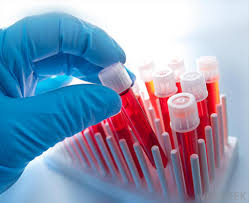In the realm of crime scene investigations, few fields have revolutionized justice quite like forensic biology and DNA profiling. These scientific disciplines have transformed how law enforcement identifies suspects, exonerates the innocent, and solves cases that once seemed destined to remain mysteries. But what exactly is forensic biology, and how does DNA profiling work? Let’s explore the science behind the headlines and how these tools shape modern criminal justice.
What Is Forensic Biology?
Forensic biology is a branch of forensic science that applies the principles of biology to legal investigations. This field involves analyzing biological samples such as blood, saliva, hair, skin cells, bones, and other bodily tissues found at crime scenes. Forensic biologists work to determine the origin of these biological materials and what they can tell investigators about a crime.
The scope of forensic biology is broad. It includes serology (the study of bodily fluids), microbiology, entomology (insect studies), botany, and, crucially, DNA analysis. While other subfields might be
employed depending on the nature of a case, DNA profiling has become the cornerstone of forensic identification in recent decades.
Understanding DNA Profiling
DNA profiling, also known as DNA fingerprinting or genetic profiling, is the process of identifying individuals based on their unique genetic makeup. Except for identical twins, every person has a distinct DNA sequence. Forensic scientists capitalize on this uniqueness to match biological evidence from a crime scene to a suspect or to confirm someone’s identity.
The process begins when forensic investigators collect samples from a crime scene. These can include blood stains, skin cells left on a weapon, or hair follicles. In the laboratory, scientists extract DNA from these samples and analyze specific regions known as Short Tandem Repeats (STRs). STRs are sections of DNA that vary greatly among individuals, making them ideal for distinguishing
between people.
Once the STRs are analyzed, a DNA profile is created—a digital representation of an individual’s genetic markers. This profile can then be compared to DNA collected from a suspect, entered into databases like CODIS (Combined DNA Index System), or even used to identify unknown victims in disasters or cold cases.
The Impact on Criminal Justice
The introduction of Forensic Biology and DNA Profiling in the late 1980s marked a turning point in forensic science. Its ability to link a suspect to a crime scene with remarkable accuracy has made it one of the most powerful tools in criminal investigations.
DNA evidence has played a crucial role in both convicting criminals and exonerating the wrongfully accused. Organizations like The Innocence Project have used DNA testing to overturn wrongful convictions, some of which involved people who had spent decades in prison for crimes they didn’t commit.
Moreover, DNA profiling is increasingly used in non-criminal contexts, such as paternity testing, identifying remains in disaster victim recovery, and even tracing missing persons.
Challenges and Ethical Considerations
Despite its power, DNA profiling is not without challenges. Contamination of samples,
misinterpretation of results, and laboratory errors can lead to false conclusions. Moreover, the storage and use of DNA data raise significant privacy concerns. Who owns your DNA profile? How should genetic information be protected? These are critical ethical questions that society continues to grapple with.
Additionally, the increasing use of genealogy databases by law enforcement to solve cold cases— famously seen in the identification of the Golden State Killer—raises questions about consent and the boundaries of investigative reach.
Conclusion
Forensic biology and DNA profiling have transformed the landscape of modern criminal justice. From solving high-profile murder cases to exonerating the innocent, these scientific tools help uncover the truth hidden within biological evidence. As technology continues to advance, the potential for
forensic biology to contribute even more meaningfully to justice is immense—provided its application is guided by rigorous scientific standards and ethical safeguards.
The future of forensic science lies in the delicate balance between innovation, accuracy, and respect for individual rights. And in that future, the DNA trail will continue to lead the way.


